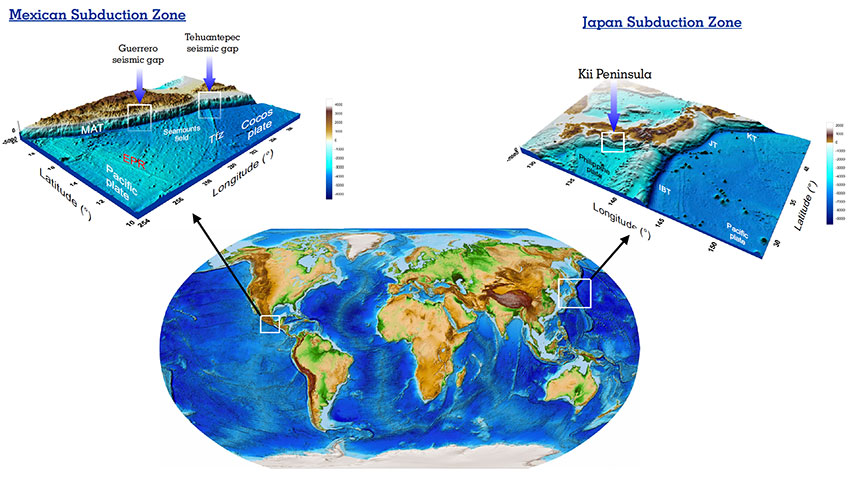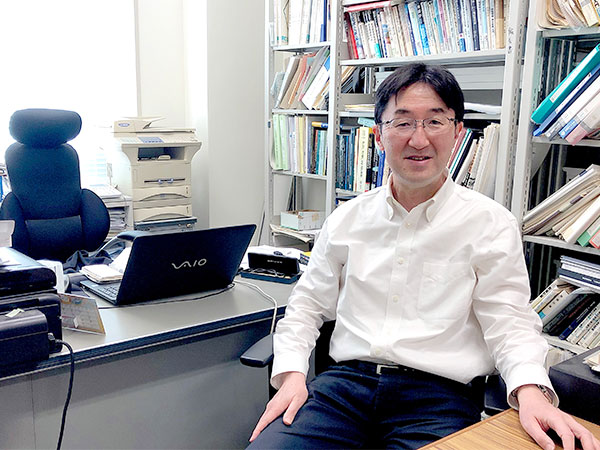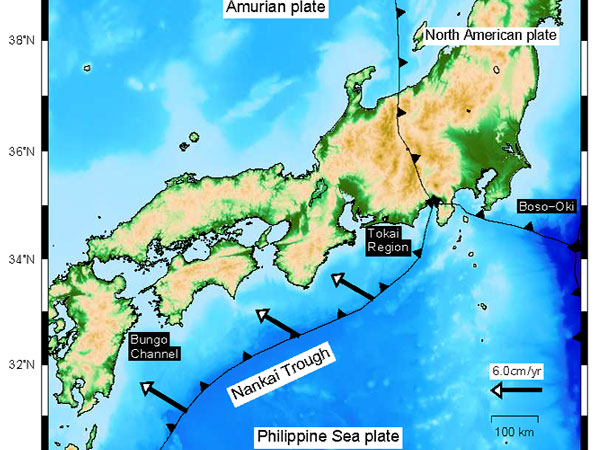Illuminating how huge earthquakes occur in Japan, Mexico and Chile
The Pacific Rim subduction zones are where oceanic plates subduct beneath continental plates. These zones are also where the most devastating earthquakes occur, inflicting enormous human, physical and economic damage. The subduction zones located in Japan, Mexico and Chile in particular have experienced increased seismic activity, resulting in very strong and destructive earthquakes impacting these three countries in recent years. Understanding how large earthquakes occur in these regions is essential for disaster mitigation and building hazard assessment. These regions have seismic gaps that have been identified as potential sites for large earthquakes. Furthermore, research advancements in recent years have led to the discovery of slow earthquakes. Slow earthquakes have occurred at plate boundaries along shallow and deep extensions in the previously mentioned seismic gaps, thus many researchers have focused on the relationship between slow earthquakes and great earthquakes. This project studyies plate subduction dynamics and the physical processes and interactions that contribute to the generation of large earthquakes through computer data analysis and numerical simulations. The project aims to elucidate the mechanisms of occurrence of large earthquakes in these regions and to clarify the universal and regional aspects.








